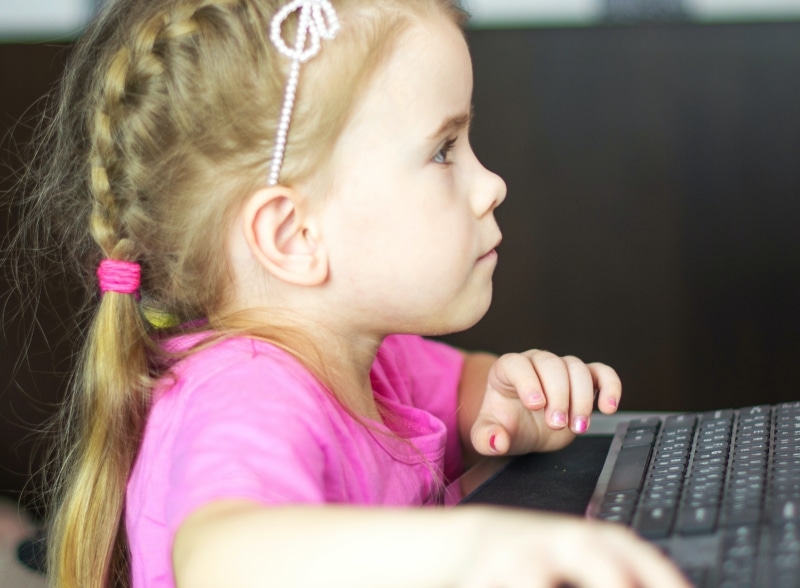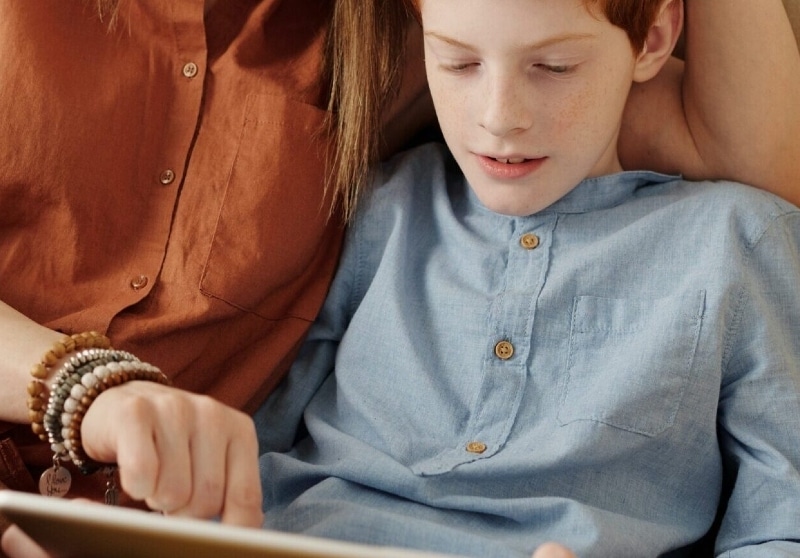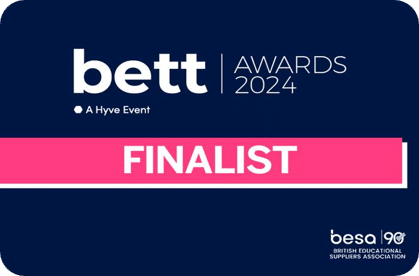Researcher of the Month
Do parental controls work and what are the pros and cons?
Policymakers and technology companies promote the use of parental control tools to ensure children’s safety in our digital age. In recent years, there has been considerable industry investment in this new generation of technical child protection measures, designed to help parents and carers to control what their children see and do online. Some of these tools operate at the level of the device (such as a phone or tablet). Other tools are embedded into specific services, such as Snapchat, or streaming services such as Netflix. Others work at the level of the operating system, such as IOS, Android or Windows, or are provided by your broadband company.
Control tools vary in functionality. Some allow parents to limit the amount of time that children spend on a device or particular app. Others can track their child’s location. Internet filters block certain categories of content (violence, adult content or gambling, for example), or specific websites. There are other tools that track children’s online activity (search history, online purchases or activity logs, for example) and provide reports or real-time alerts to parents. Some tools track activity and interactions on social media platforms and can limit children’s contact with unknown users.
But how many families actually make use of them, and do they work? Our Researcher of the Month, Dr Mariya Stoilova, and her colleagues, reviewed all available evidence in a recently published study.
Summary
Dr Stoilova and her team, led by Professor Sonia Livingstone, conducted a rapid evidence review of all studies published (in English) between 2010 and 2021 on the subject of age verification and parental controls. 40 studies which met specific criteria for relevance and quality were included in their in depth analysis. Most studies were from North America and Europe, a few from Asia and a small number from elsewhere in the world. The team identified four main motivations for using parental controls: risk aversion and safety, parenting styles and values, child development and parental skills.
They found that parents often use controls to protect children from potential risk, though not all parents are equally worried about safety, and some (about one in five according to EU Kids Online data) are also concerned about the potential negative effects of these tools on children’s privacy, autonomy and decision-making skills. These parents tend to use controls less. Controls are more likely to be used more when children are younger, and in larger families, where children of different ages might be sharing devices and parents wish to have distinct permissions for each child. Parents tend to use controls for additional reassurance when they feel that their child still lacks the skills required to use the internet safely. The research also showed that younger and more digitally skilled parents tend to use control tools more frequently than older parents, or those who are less digitally savvy.
Whilst tools are generally marketed to parents as effective and positive, Dr Stoilova’s findings on their success are quite mixed.
17 studies showed some beneficial outcomes. These were mostly linked to the reduction of online risk, including less exposure to sexual content, cyberbullying, problematic gaming, illegal downloading, self-harm content and harmful advertising. Some tools also encourage positive practices, such as stronger time management skills, improved communication and a better ability to identify when a child needs help. However, other studies found that the controls tools had no effect at all and did not provide the expected protection, whilst some limited potentially beneficial online opportunities. Eight studies actually pointed to adverse or harmful outcomes, where tools led to higher levels of family conflict and distrust, or had negative impacts on children’s privacy and autonomy.
The research highlights that parental controls should not be considered a ‘silver bullet’ which will guarantee online safety. However, when chosen carefully and used to help promote children’s digital agency and development, rather than limit it, they can be helpful as one of many tools that parents can use to help children to thrive in the digital world.
Implications
“The best outcomes for children occur when parents integrate parental controls as part of positive parenting centred on open communication and respectful negotiation within the family.”
Parents looking for further information on different kinds of parental controls should seek resources from evidence-based, reputable organisations that work with children. Dr Stoilova recommends the NSPCC, Internet Matters or the Safer Internet Centre as good starting points with robust information about best practices. Tooled Up members can also check out our resource on parental controls.
Choose parental control tools that suit your current needs. Does the tool evolve with your child and allow them to grow? Consider your own individual circumstances and reflect together on what works best for your family. Before use, take time to research that the controls you use protect children’s data. Check how safe the data is and who has access to it.
For younger children (up to the age of 12), it is optimal to use parental controls within the broader context of active interest in your child’s online environment. Consider the risks and the opportunities and talk about both within family life. Show your children that you have a rounded perspective and are aware of both risks and all the ways that they benefit from exploring the digital world.
With teens, support their growing independence through open discussion. Talk to your teen to ensure that any controls you use are age-appropriate and offer protection, whilst enabling their growing agency and capacity to make their own choices. Gradually allow them more freedom and strive to develop a mutually trusting relationship.
Speak to your child about the quality of their online experiences and don’t fixate on ‘screen time’. Screen time per se, is not the problem. Dr Stoilova is currently conducting with colleagues a study on internet use and adolescent mental health (DIORA). One of the early findings is that screen time does not explain mental health problems. It is what your child is doing online that is important. Are they learning, socialising, being playful and creative? Is their experience balanced?
Take a positive interest in the apps and games that your child uses. By talking to your children, you are more likely to know if they are downloading new platforms and content, which might require additional parental controls.
Don’t use parental controls without your child’s knowledge. Some marketing strategies seem to take pride in controls being undetectable to children. The evidence shows that this is counterproductive. As parents, we can’t talk to our children about the things that we know are happening to them online, if they don’t know that we know! Without reflective conversation, children are less likely to learn from the experience.
Think of parental controls as tools to enable children to use the internet safely. Ideally, control tools should encourage children to think about their online activities, help them to learn digital skills and support their growing digitally independence, rather than restrict them from engaging.
You don’t have to use every tool just because they are out there. Building a trusting and supportive relationship with your child will always be the most important step. As a parent, you have lots to offer in teaching your child to think critically, regardless of control tools!
Make decisions with your child, not for your child. Once children are old enough to engage, sit down as a family and discuss your digital values as a group. Explore different options together, share your concerns and explore options that your child is happy to use. Try to make decisions jointly about the best options and tools that might help. In doing so, you will help to avoid conflict. Our resource can help to structure this conversation.
Remember that parental controls are a mixed blessing and shouldn’t be relied on exclusively. Use them as only one of the many tools you have in your digital parenting toolbox. Remember that restricting your child’s use is also likely to restrict their development of skills, learning and communication. Children will need digital skills throughout their life. Strive for a balanced approach which encourages them to use the internet, and to know how to do so safely.
Remember that when children face risks online, they learn, develop and build resilience. When children encounter risk, it doesn’t necessarily mean that they will experience harm. Be realistic about expectations for your child’s digital experience and be balanced in your approach to rules and restrictions.
Finally, don’t put pressure on yourself and remember that there are no perfect solutions. Dr Stoilova notes that choosing what parental controls to use out of the myriad available is overwhelming and the responsibility shouldn’t really all lie with parents. She calls for more support from the industry and better regulation.
Resources Created from and Related to this Research

Dr Mariya Stoilova, Post-Doctoral Researcher at the Department of Media and Communications, London School of Economics and Political Science (LSE).
Dr Mariya Stoilova is a post-doctoral researcher at the Department of Media and Communications, London School of Economics and Political Science (LSE). Her area of expertise is at the intersection of child rights and digital technology with a particular focus on the opportunities and risks of digital media use in the everyday lives of children and young people. She works also on data and privacy online, digital literacy, pathways to online harm, mental health and wellbeing. Dr Stoilova has spent the last 10 years researching and publishing on these issues.






